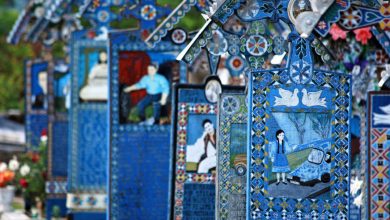The Other Side of Europe: Armenia

‘The Other Side of Europe’ is an article series providing information about the EU European (geographically or culturally) neighbour countries located between Eastern Europe and the Caucasus. It follows a series in which we explored opportunities for future enlargement. In this sixth and last instalment, we will look at Armenia.
Geography and Culture of Armenia
Armenia is a Eurasian country in the southern Caucasus, with Yerevan as its capital city. It covers 29,743 squared kilometres and has a population of 2,951,745 inhabitants. Armenia borders Turkey to the west, Georgia to the north, Azerbaijan and the unrecognised Republic of Artsakh (formerly Nagorno-Karabakh) to the east, Iran and the Azerbaijani exclave of Nakhchivan to the south.

Armenian culture is fundamentally European, with some Eurasian influences. The advent of Christianity in the region during the 5th Century AD introduced writing to Armenia, replacing its archaic oral traditions. Prominent early founders of Armenian literature were Mastots and Sahak the Great. Another essential part of Armenian culture is music. Armenian orchestras are famous around the world, with Armenian music having incorporated many different genres, while still maintaining a traditional style.
Together with literature and music, the Armenian language is a very important part of Armenian culture. This language, commonly called hayeren, belongs to the Indo-European family, and it is spoken across the Caucasus and in other countries, as a result of the Armenian diaspora. As with every language, Armenian has evolved over the centuries. Classical Armenian held sway well into the 19th Century, but in the time since, Armenian has split into two different dialects, Eastern and Western Armenian respectively. Both dialects make use of Armenia’s traditional alphabet. The Eastern variant is spoken in Armenia proper, and is also popular with the Armenian community in Iran. Several linguistic minorities are widespread in the country, and a large part of the population speaks Russian as a second language.
Cuisine is a microcosm of Armenian culture, with a varied combination of flavours and aromas. Straddling Mediterranean and Asian influences, it includes vegetables, fruits, fish and, above all, spices. Bread in Armenian culture has always been considered the symbol of nourishment, which explains its central role, and why it’s baked in many different shapes and varieties. It is traditionally baked in the tonir, a terracotta-lined floor hearth. Finally, Armenia has a great tradition in the field of chess. To name the two most prominent names: Tigran Vartani Petrosyan, World Chess Champion from 1963 to 1969, and Levon Aronyan, two-time chess World Cup champion, in 2005 and 2017.

Society and Religion
According to the 2001 ethnic census, the majority of the population is Armenian, tallying 97.9%. Kurds account for 1.3% of the population, followed by Russians (0.5%) and other groups, including Assyrians, Ukrainians, Greeks and others. The Kurdish population belongs mainly to the Yazidi religious group. Because of the troubled history of this country, more Armenians live abroad than in Armenia itself. The country has around 3 million inhabitants, and statistics record more than 8 million Armenians living abroad, not including descendants of emigrants.
Armenia is a country with a Christian majority, and the Armenian Church boasts an ancient tradition. This is unsurprising, seeing as Armenia was the first nation in the world to adopt Christianity as an official religion in 301 AD. Strongly conservative and ritualistic, the Armenian Church is closely linked to the Coptic, Syriac Orthodox, and Orthodox tradition. There are small minorities of evangelical Protestants, as well as traditional cults. The Yazidis, who live in the western part of the country, practice “Yazidism”. The Azeris and many Kurds who once lived in the country practised Islam; however, many of them left Armenia following the conflict with Azerbaijan.
Economic Context
Armenia’s economic situation is rather peculiar. The primary sector employs 40% of the population. The main crops are wheat, barley, corn, potatoes, tobacco, vegetables, vines, and fruit. Sheep milk is used to make motal, Armenia’s traditional cheese. Despite the variety of produce, Armenia has to import large quantities of food, because local production is not able to meet the country’s needs. On the other hand, Armenia is a highly industrialised country. The industrial sector employs the majority of people, with food, paper, mechanical, electrical, textile, chemical, rubber, cement, and tobacco industries being particularly important.

In the energy sector, fuel from Russia is the country’s major power import, alongside gas and atomic fuel (for its nuclear power plant). The primary domestic power source is hydroelectricity. Small deposits of coal, gas, and oil still exist but were never well developed. In the tertiary sector, mountain tourism is very profitable. Overall, Armenia shows constant economic progress, increasing credibility and support from international organisations. Armenia joined the World Trade Organization in 2003. The International Monetary Fund (IMF), World Bank, European Bank for Reconstruction and Development (EBRD), and other foreign economic institutions are providing significant grants and loans.
Since 1993, loans destined to Armenia surpassed a total of $1.1 billion. These loans aim to reduce the budget deficit, and preserve the stabilisation of the currency. The development of private companies and businesses is also a major concern, as is strengthening the healthcare and education sectors. Last but not least, continuing reconstruction in earthquake-affected areas is an ongoing effort. Unemployment amounted to 18.5% in 2015, and it persists as a significant problem due to the stream of thousands of refugees from the Karabakh conflict.
State of relations between Armenia and EU
Armenia and the European Union have maintained a positive relationship throughout the years. They are linked through the Comprehensive and Enhanced Partnership Agreement, signed in 2017. This agreement has deepened EU-Armenian ties, but it’s not expected to lead to an Association Agreement. Despite the fact that Armenia’s trade with EU Member States surpasses that with Russia, Belarus and Kazakhstan combined, Armenia is highly dependent on Russia for questions of defence. The Nagorno-Karabakh War started in 1991 and ended in May 1994, but if the fighting itself has largely stopped, the crisis has continued to fester. This has forced Armenia more and more into Russia’s camp for its own survival. In this respect, Armenia perceives its membership in the Collective Security Treaty Organization as a counterbalance to US military entanglement in Azerbaijan.

A survey carried out in Yerevan in October 2006, however, showed that “as many as 72% of city residents believe, with varying degrees of conviction, that their country’s future lies with the EU rather than the Russian-dominated Commonwealth of Independent States (CIS)”. Nevertheless, according to another survey of 2019, more than two-thirds of Armenians assumed that Armenia would not be prepared to join the EU in the next few years.
The Road Ahead
The Caucasus is in flux, both from a geopolitical and an economic standpoint. The roots of this instability are multiple: the conflicts dating back to the the 1990s, like the armed and political struggle between Azerbaijan and Armenia; the relationship between Armenia, Georgia, and Turkey; and the continued dominance of Russia in the area. In this complex context, enter China. Since the Caucasus is a crucial area for the Chinese New Silk Road, China could play a powerful role as an outsider and have great impact on the current balance of power.
The European Union’s influence looks, at the moment, well below expectations. The continued stagnation of talks with Turkey has diminished the EU’s ability to influence events in the Caucasus. Armenia’s existential need for military hardware and security guarantees means that its only two possible patrons are either Russia or NATO, rather than the EU. Therefore, while Armenians are at near consensus that their future is with the EU, it is difficult to translate this into a political reality. The situation looks, in a certain way, similar to the Serbian question. The future will depend on the future relations between the EU and Russia, and the EU and NATO, which are troubled and difficult in this new age of great power competition.





